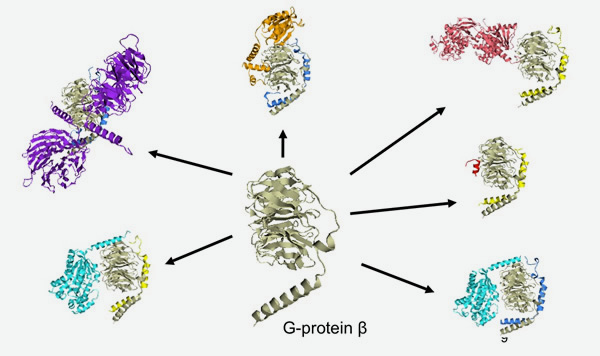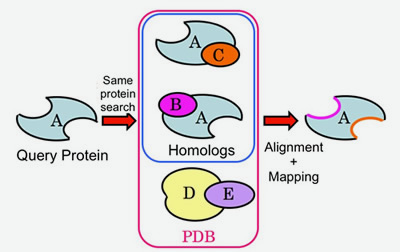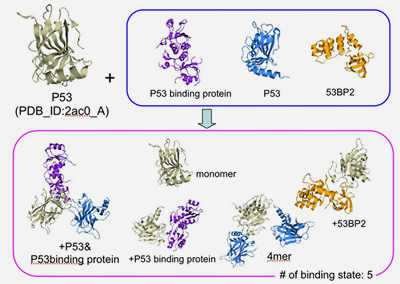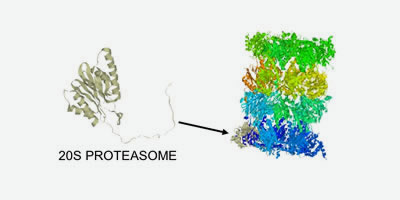About PiSITE
The database PiSITE provides real interaction sites of proteins using the complex structures in PDB. According to the progress of several structural genomic projects, we have a large amount of structural data in PDB (Fig. 1).

Fig. 1: An example of multiple binding states in PDB.
Consequently, we can observe different binding states of proteins in atomic resolutions, and can analyze actual interaction sites of proteins. It will lead better understandings of protein interaction sites in near future. Usual practice to identify the interaction site has been done using a representative complex in PDB. However, for the proteins with multiple partners, non-interaction sites identified by using a single complex structure is not enough, because some part of the non-binding sites may be involved in the interaction sites with another proteins. Therefore, the real interaction sites should be obtained by using all of the binding states in PDB. For the purpose, the identifications of the binding site in PiSITE are done by searching the same proteins with different binding sites in PDB at first, and then mapping the binding sites onto the query proteins (Fig. 2).

Fig. 2: Schematic view of the identification of interaction sites
PiSITE also provides the lists of transient hub proteins, which we call "sociable proteins" to clarify the different of so-called hub proteins. The sociable proteins are identified as the proteins with multiple binding states and multiple binding partners. On the other hand, so-called hub proteins have been identified as the proteins at the hub position in protein-protein interaction networks obtained by large-scale experiments, but the definition of the hub proteins cannot differentiate transient hub proteins from stable ones, although the differentiation is critically important for the better understanding of protein interaction networks. In addition, the usual definition of hub proteins can contain supermolecules as hub proteins. The supermolecules can be identified as the proteins with a single binding state and multiple binding partners, which we call stable hub proteins. Examples of a sociable protein and a stable hub protein are shown in Fig. 3 and Fig. 4, respectively.

Fig. 3: Example of a sociable protein

Fig. 4: Example of a stable hub protein. A subunit in a supermolecules can be a so-called hub protein.
